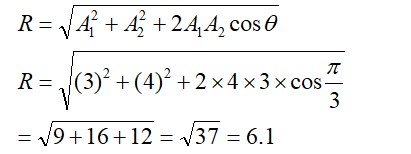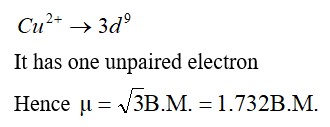An inorganic compound ‘X’ on treatment with concentrated H2SO4 produces brown fumes and given dark brown ring with FeSO4 in presence of concentrated H2SO4. Also compound ‘X’ gives precipitate ‘Y’, when its solution in dilute HCl is treated with H2S gas. The precipitate ‘ Y’, on treatment with concentrated HNO3 followed by excess of NH4OH further given deep blue coloured solution, Compound ‘X’ is:
An inorganic compound ‘X’ on treatment with concentrated H2SO4 produces brown fumes and given dark brown ring with FeSO4 in presence of concentrated H2SO4. Also compound ‘X’ gives precipitate ‘Y’, when its solution in dilute HCl is treated with H2S gas. The precipitate ‘ Y’, on treatment with concentrated HNO3 followed by excess of NH4OH further given deep blue coloured solution, Compound ‘X’ is:
Option 1 -
Cu(NO3)2
Option 2 -
Pb(NO3)2
Option 3 -
Co(NO3)2
Option 4 -
Pb(NO2)2
-
1 Answer
-
Correct Option - 1
Detailed Solution:Deep blue colour solution
In cation analysis of Cu+ ions, precipitate formed is CuS on treating with H2S and HCl which dissolved in HNO3 and produced blue colour complex solution
Similar Questions for you
K2Cr2O7 + H2O2 + H2SO4->
Potassium permanganate in alkaline medium oxidise lodide to lodate.
Compound A is
KMnO4 decomposes upon heating at 513 K and forms K2MnO4 and MnO2.
2KMnO4
Taking an Exam? Selecting a College?
Get authentic answers from experts, students and alumni that you won't find anywhere else
Sign Up on ShikshaOn Shiksha, get access to
- 65k Colleges
- 1.2k Exams
- 679k Reviews
- 1800k Answers




